Indianapolis Speedway

Brief Synopsis
Cast & Crew
Lloyd Bacon
Pat O'brien
Ann Sheridan
John Payne
Gale Page
Frank Mchugh
Film Details
Technical Specs

Synopsis
World champion race car driver Joe Greer is determined to see his kid brother Eddie finish college, but Eddie wants to follow in his brother's footsteps and join the racing circuit. Eddie finally wins his brother's consent to take to the race track if he promises to study at night, but problems between the two erupt when Eddie becomes enamoured with Frankie Merrick. Convinced that Frankie is a gold digger, Joe tries to break up Eddie's romance, and on the night before the big race, the brothers argue about her. As a result, Eddie signs up to drive a rival car in the race. Angered, Joe decides to teach his brother a lesson by driving him off the track. During the competition, Joe's best friend, Spud Connors, tries to separate the brothers' cars but dies when his car crashes and bursts into flames. Guilt-stricken, Joe gives Spud's wife all his savings, leaves town and sinks into oblivion, terrified of ever returning to the track. Meanwhile, Eddie marries Frankie, ascends to the championship by winning race after race, and works on new inventions for racing car manufacturer Duncan Martin. Having reached his nadir, Joe hitchhikes to the racetrack to watch his brother compete in the Indianapolis classic. While in the lead, Eddie is injured. Joe immediately springs from the stands, hops into his brother's car and drives it to victory, thus conquering his fear of racing. At the finish line, the brothers reconcile, and Joe proposes to his sweetheart, Lee Mason, and accepts a job at Martin's car company.

Director

Lloyd Bacon
Cast
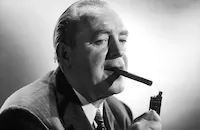
Pat O'brien
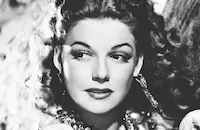
Ann Sheridan

John Payne

Gale Page
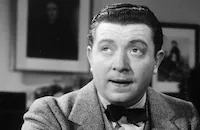
Frank Mchugh

Grace Stafford
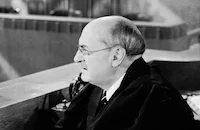
Granville Bates

John Ridgely

Regis Toomey
John Harron

William Davidson

Ed Mcwade

Irving Bacon
Tommy Bupp
Robert Middlemass

Charles Halton
Sam Hayes
John Conte
Wendell Niles
Reid Kilpatrick
Patsy O'byrne
Nat Carr
Jack Wise
Sidney Bracy
Eddy Chandler
Creighton Hale
Jeffrey Sayre
Claude Wisberg
Georges Renavent
Evelyn Mulhall

Ralph Dunn
Ted Oliver
Ed Parker
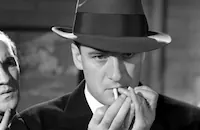
Elliott Sullivan
Hal Craig
Sol Gorss
Paul Phillips
Billy Wayne
William Gould
Garland Smith
Monroe Lee
Crew
Elmer Decker
Adolph Deutsch
Leo F. Forbstein
Jo Graham
Esdras Hartley
Howard Hawks
William Hawks
Sig Herzig
Sid Hickox
William Holmes
Arthur Klein
Wally Klein
Orry-kelly
Frank J. Scheid
Max Siegel
E. A. "babe" Stapp
Jack L. Warner

Film Details
Technical Specs

Articles
Indianapolis Speedway
Speed was of the essence in a story like this, but it was also a part of the Warner Bros. house style, both on-screen and off-. O'Brien was one of the studio's champion fast-talkers, with Sheridan matching him every step of the way. And in addition to keeping the action on-screen moving quickly, director Lloyd Bacon was one of the fastest-working directors at the fast-shooting studio. He had already established his credentials on the trend-setting musicals 42nd Street and Footlight Parade (both 1933) and one of the quickest-moving of Cagney and O'Brien's co-starring vehicles, Boy Meets Girl (1938). Amazingly, he also managed to shoot with almost record quickness -- he once printed 47 takes in one day -- without losing depth of character. In fact, his Warner's films contain some of the most vivid character actors from the studio's stock company.
Economy was the essence of the Warner Bros. approach to re-making past hits. They didn't just recycle scripts, they recycled as much footage as they could get away with. Most of the racing footage and crowd scenes used in Indianapolis Speedway had actually been shot by Howard Hawks for The Crowd Roars. They just kept the character names and the car's numbers the same so they would match up. They even re-used the announcers; commentary from the three races that figure in the plot, along with footage of real life racecar driver Bill Arnold, who had won the Indianapolis 500 in 1930.
The studio's stock company was an asset in re-using older footage. Many of the original film's supporting players were available to re-do their roles for the new version. Among them, the most notable was Frank McHugh, who plays a family friend who dies because of the brothers' rivalry. The entire accident that takes his life came from the first film, with new footage kicking in for close shots of his wife (Grace Stafford) reacting to the tragedy. One player from the original who moved into a new role was Regis Toomey. For the remake, he took over scenes originally played by another real-life racer, Wilbur Shaw.
The oomph, of course, was supplied by leading lady Ann Sheridan. During this period, she was getting the studio publicity push, complete with the title "The Oomph Girl." Just to underline her much touted sex appeal, the new script had her play her first scene in a negligee, another in the shower and a third in shorts. That she was also a fine actress and skilled comedienne would not become obvious until the "oomph" factor made her the star of such '40s hits as King's Row and The Man Who Came to Dinner (both 1942).
Critics were quick to point out that Indianapolis Speedway wasn't quite as good as its predecessor, though that was hardly a problem in the days of block booking. The film had been made so economically it couldn't really lose at the box office. It would take the arrival of VCRs, however, to make it clear just how economical this production was.
Producer: Max Siegel
Director: Lloyd Bacon
Screenplay: Sig Herzig, Wally Kline
Based on the story "The Roar of the Crowd" by Seton I. Miller, Howard Hawks
Cinematography: Sid Hickox
Art Direction: Esdras Hartley
Music: Adolph Deutsch
Cast: Pat O'Brien (Joe Greer), Ann Sheridan (Frankie Merrick), John Payne (Eddie Greer), Gale Page (Lee Mason), Frank McHugh (Spud Connors), Regis Toomey (Dick Wilbur), Irving Bacon (Fred).
BW-85m.
by Frank Miller

Indianapolis Speedway
Quotes
Trivia
Notes
Working titles for this film were The Roaring Road and The Devil on Wheels. Frank McHugh reprised his role from the 1932 film in this picture. The file for the film in the MPAA/PCA Collection at the AMPAS Library indicates that, in December 1938, the PCA demanded that Warner Bros. eliminate from the script "the suggestion that Joe and Lee have been living without the benefit of clergy." The PCA also noted that the script contained "too much drinking," and urged the studio to make certain that there was no suggestion that "Frankie" was nude under the covers of her bed. In addition, the studio was told that "Frankie's" costume should not be, as the script called for, "as brief as the law allows." According to a December 1938 Los Angeles Examiner article, actor Ronald Reagan was originally slated for the co-starring role opposite Pat O'Brien. The Los Angeles Examiner article also notes that technical advisor Arthur Klein, a race car driver, broke all Indianapolis Speedway racing records during his stint there, and that the car he raced was to be used in the film. A Hollywood Reporter pre-production news item noted that John Payne replaced Wayne Morris in the part of "Eddie" so that Morris could go on his honeymoon. According to the MPAA/PCA file, the scene showing "Spud" dying in the car wreck and his screams were deleted from the film by censors in England and New Zealand. Indianapolis Speedway was a remake of the 1932 Warner Bros. film The Crowd Roars.















